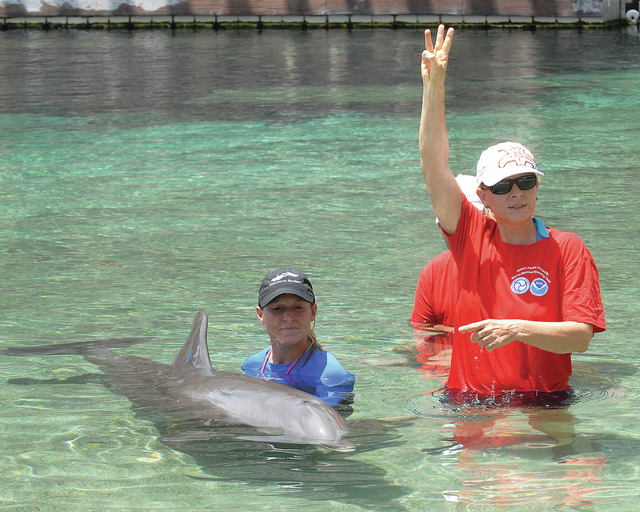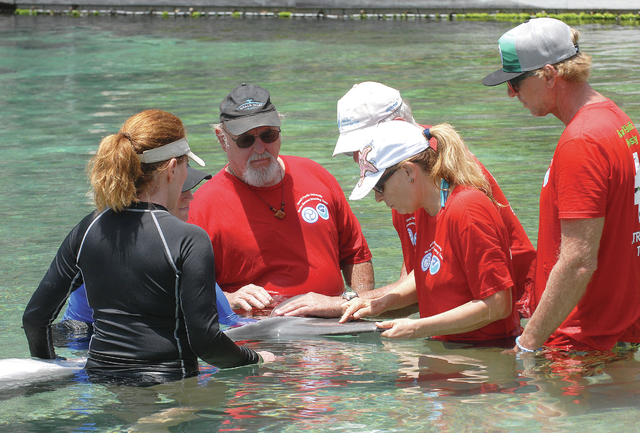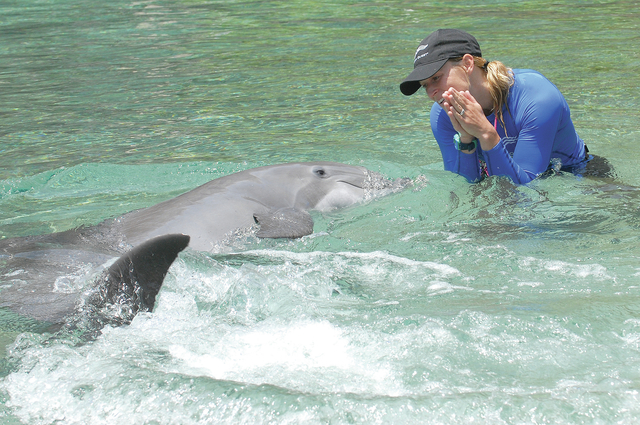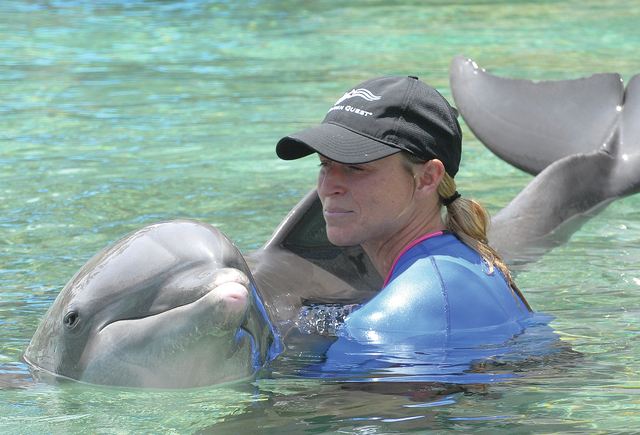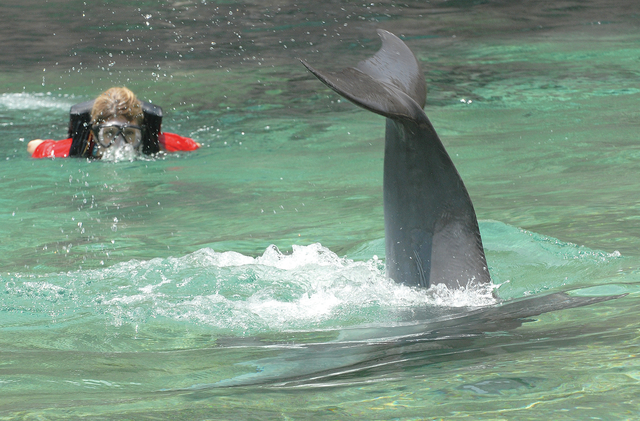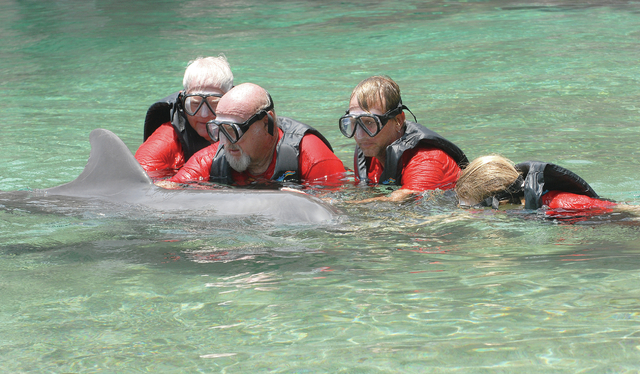WAIKOLOA — Things you can’t learn from a book — how the skin of a healthy dolphin feels, how the animal feels resting on your hands, and how powerfully a thriving cetacean heart beats under the palm. ADVERTISING WAIKOLOA —
WAIKOLOA — Things you can’t learn from a book — how the skin of a healthy dolphin feels, how the animal feels resting on your hands, and how powerfully a thriving cetacean heart beats under the palm.
This past week, more than a dozen volunteers for the Hawaii Marine Mammal Response Network took the measure of healthy dolphins in Waikoloa so they’ll know the difference when they encounter a sick animal in the wild.
Volunteers from across the island — some of whom hadn’t yet touched a marine mammal — counted and recorded dolphin breathes, learned what the breath should sound like, found the veins that lead to the flukes, where blood samples can be taken. It was the second time in recent years the volunteers have teamed up with Dolphin Quest marine mammal specialists for the live animal training.
“Our volunteers get to know what it’s like to hold an animal, tell its respiration, heart rate, behavior, what its eyes look like. The difference of a sick animal in the wild isn’t obvious if we don’t know what a healthy animal feels like,” said Tom Elliot, stranding coordinator for the Big Island.
“Otherwise, we’re training on inflatable animals,” Elliot said. “And a large blowup dolphin is just not the same.”
As volunteers like Julie Steelman clustered chest-deep around the animals in a lagoon at the Hilton Waikoloa Village, they broke into smiles. There were quiet questions and hushed periods, which felt reverent.
More than scientific and medical observations were taking place, said Rae Stone, a marine mammal veterinarian and co-founder of Dolphin Quest. An important emotional connection was forming, too.
Steelman, a volunteer of nine years from Kailua-Kona, has placed her hands on pygmy whales, seals, false killer whales and a sperm whale. Up until now, she had only felt the heartbeat of animals close to death.
A healthy dolphin’s heartbeat is a lot like a human’s, she said. To be able to feel that similarity helped deepen her affinity for the marine mammal.
“You know, to be able to do something like this in this type of setting is just fantastic,” she said.
The reasons that marine mammals strand themselves aren’t often clear. As Elliot puts it, no two strandings are ever the same.
Often multiple factors are sickening the animal, said Stone. Responders and the veterinarians and researchers who follow face an enormous puzzle that they must piece together, and in the end they often can’t find a smoking gun, or end up with more questions than they started with.
“Every bit of data we can extract ahead of the veterinarians so they can figure out what is going on — it all helps,” Elliot told the volunteers. “You’re basically first responders to an accident scene.”
About 18 members islandwide responded to more than a half dozen distressed mammals in the last 12 months. The group is administered under Hawaii Pacific University and funded by the National Oceanic and Atmospheric Administration.
Sometimes months will go by without a call, Elliot said, then the phone will start ringing. On Kauai, there was not a single stranding last year, he said. But on average, the state sees around 20 strandings of dolphins and whales annually.
Last year, the group responded to a young spinner dolphin near Kailua-Kona. They got the dolphin to Oahu, where they found it had died of a massive toxoplasmosis infection. It begged the question, Elliot said — is toxoplasmosis a major problem for nearshore cetacean species? And where did the disease come from? Could feral cats be a source of the disease, which has also killed eight monk seals in the past 12 years?
“We really don’t know what instinct brings them ashore,” Elliot said.
Sometimes the answers lie deep in the mystery of animal behavior. In 2009, marine mammal responders found a group of pygmy killer whales apparently stranded in nearshore waters off Maui. They observed and puzzled over the pod, trying to determine which animal was the reason that the rest were there.
“It turned out to be a very old animal that had come in to die, and they had come in to see him off,” Elliot said. “They hung out with him for three weeks.”
A rule of thumb for the public is to never push a stranded animal back into the water. That may seem counterintuitive for some, but there are no exceptions. Not only are the animals on shore for a reason, but returning them to the water can lead to shark predation. And if a group of animals is involved, it deprives researchers of an opportunity to identify which are sick, Elliot said.
“They’re already in bad shape; we don’t know what’s wrong with them,” Elliot said. “They need expert help.”
To report a stranding, call 808-987-0765, or the national hotline at 888-256-9840.
Info: plmf.org







